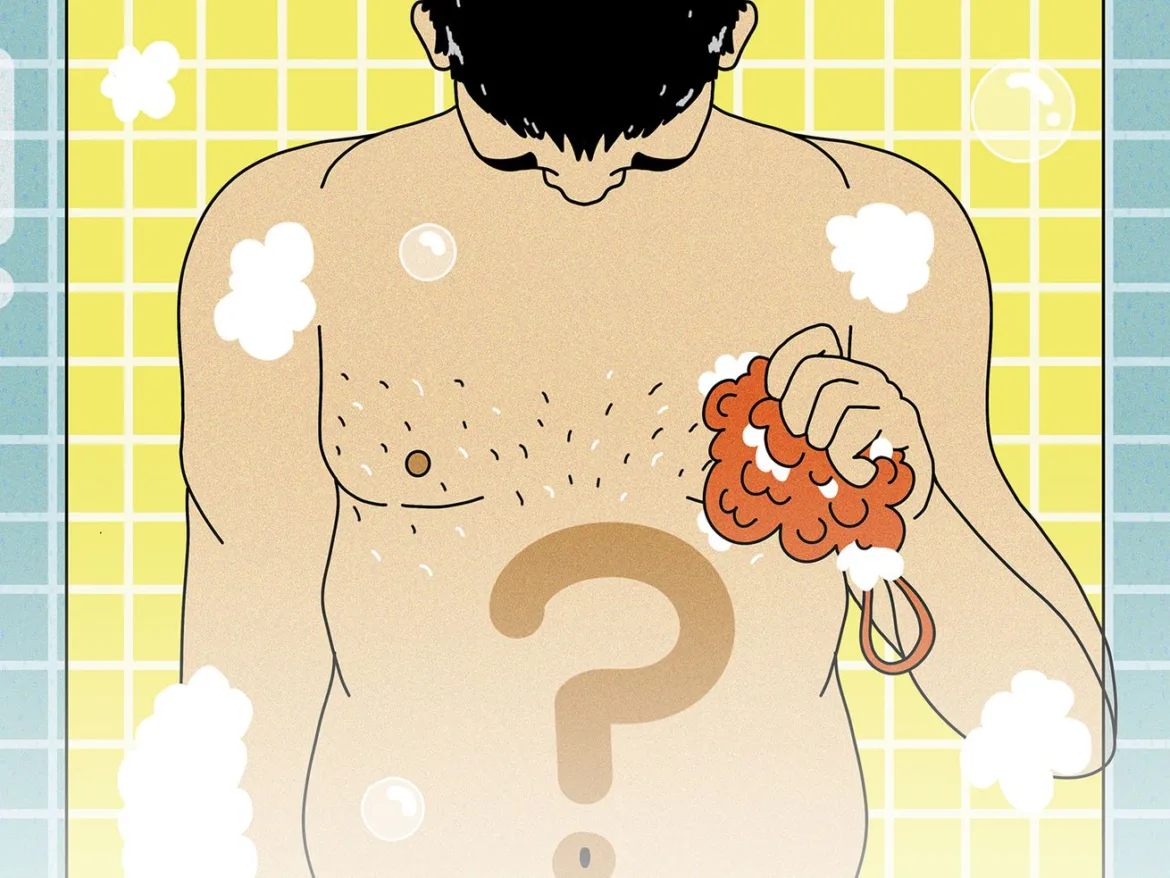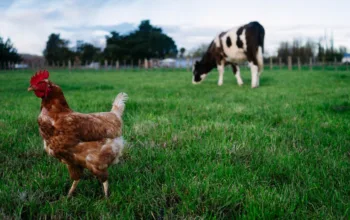Cancer used to be a disease of the old. Not anymore.
For the past decade, doctors have been disturbed by a medical mystery: People all over the world are developing cancer at younger ages.
Adults in the prime of their lives, often otherwise outwardly healthy, are dying of aggressive cancers that appear to develop more quickly and be more deadly than in the past, for reasons that scientists cannot adequately explain.
Clinicians have especially been noticing a rise in cancers in the gastrointestinal (GI) system — including colorectal, kidney, and pancreatic cancers — in adults younger than 50, the cutoff for what is usually considered early-onset cancer.
Scientific authorities around the world see this as one of the most pressing questions for modern medicine and are now funding an ambitious, globe-spanning research project to provide some desperately needed answers.
Researchers in the US, Europe, and Asia are teaming up on a $25 million project jointly funded by the US National Cancer Institute, Cancer Research UK, Bowelbabe Fund for Cancer Research UK, and the French National Cancer Institute to investigate the leading lifestyle and environmental risk factors — from toxins to diets high in ultra-processed foods — believed to be contributing to the spike in early cancers. Over the next five years, the team will be gathering evidence on the ground in the US, Mexico, UK, France, Italy, and India.
“We want to do this from an international perspective because it’s an international problem,” Andrew Chan, a cancer epidemiologist and clinical gastroenterologist at Harvard Medical School and Mass General Hospital who is co-leading the project, told me. “That helps us to get insight into what’s common across these different parts of the world and what’s unique.”
Combining large population surveys, animal studies, and public health awareness campaigns, the team hopes to not only identify factors that play a role in early-onset cancers but also to establish the biological mechanisms that drive them. That could help lay the groundwork for better screenings and treatments and could ultimately have far-reaching implications for the foods we eat, the consumer goods we produce, and the very fabric of everyday life.
Cancers among young adults have become a global health crisis
One in five new colorectal cancer patients in the United States is under 55, according to a recent Wall Street Journal analysis of data from the National Cancer Institute. That’s nearly twice the rate in 1995.
While deaths for colorectal cancer patients over 65 are going down, deaths among younger patients are increasing, a reflection of the higher mortality rates often observed in early-onset cancers. Scientists say these cancers can be more deadly because they are not caught early enough for successful interventions. (Colonoscopies are not recommended until age 45.)
A decade ago, the known risk factors were largely limited to diet and exercise, as obesity was associated with a higher chance of developing colorectal and GI cancers. But we now know that it’s a lot more complicated than how much a person weighs.
While the increase in global obesity rates since the mid-1990s likely plays a significant role in the uptick, scientists have found that specific diets, such as those rich in so-called ultra-processed foods, have been associated with a higher risk of GI cancers, regardless of a person’s body-mass index.
Exposures to toxins in the environment and in everyday goods, including phthalates found in makeup and hair products and formaldehyde in building materials, are now also suspected to increase cancer risk in younger patients — particularly if the exposure occurred at pivotal points in a person’s life. Getting less sleep or interrupted sleep may also be a factor.
“We know, for example, sleep and circadian rhythm is an important component of health,” Chan told me. “People are probably getting less sleep or having more disrupted sleep for a variety of reasons. Is that potentially changing our biology in a way that is detrimental?”
Much of today’s cancer research is also focusing on the microbiome, the ecosystem — or rainforest, as one researcher put it — of bacteria that is concentrated in the gut. Certain kinds of microbiome bacteria are associated with the development of GI cancers, but researchers are still puzzling out whether those changes are a cause or a consequence of cancer.
Finding solutions is crucial not only for wealthy nations, where increases in early cancer cases and deaths are most pronounced, but also for the rest of the world. Developing countries are contending with some of the same environmental contaminants as affluent countries, from microplastics to air pollution, and they are already seeing rising death rates from other obesity-related diseases. As poorer countries become more economically developed, they are also expected to see more “first world” health problems — including cancer.
“This is going to be a problem that is going to be facing us as our economy gets stronger,” said Bhawna Sirohi, medical oncology director at the Balco Medical Center in Raipur, India, who is leading the project’s work in that country. It’s “facing us, the West, everywhere.”
What we know — and what we don’t — about early-onset cancers
The increase in early-onset cancers has become undeniable, replicated in study after study. A BMJ article published last year found that the early onset of 29 different cancers, including breast, stomach, and colorectal, had risen nearly 80 percent between 1990 and 2019 worldwide. Another study published in JAMA Network Open last August found that the occurrence of a wide range of cancers among people under 50 had increased between 2010 to 2019 among American adults, particularly among women.
While colon and rectal cancers are driving much of that increase, cancers up and down the GI tract, including the bladder and kidneys, are on the rise among adults younger than 50. A 2019 Lancet paper documented an uptick in cancers among US adults 25 to 49 years old, driven by higher rates of colorectal, uterine, gallbladder, kidney, and pancreatic cancers between 1995 and 2014. Gastrointestinal cancer incidence was up 15 percent overall from 2010 to 2019, according to the JAMA study. Bile duct cancers in the passage between the liver and gallbladder (up 142 percent over the past decade) and uterine cancers (up 76 percent) have seen some of the largest increases in prevalence, the same study found, though they still occur overall less often than colon cancers.
John Marshall, director of the Ruesch Center for the Cure of Gastrointestinal Cancers at Georgetown University, has been treating patients for 30 years. Early in his career, he says, he would never have a patient under the age of 50. Today, half of his patients are in that younger cohort, many of them otherwise healthy and fit. He first started to notice the trend with colorectal cancers, but later found an increase in other cancers as well, mirroring the research literature.
“We’ve been observing this for more than 10 years,” Marshall told me. “The trend is continuing and increasing and being observed now in other cancers beyond colorectal.”
When the spike in early cancers was first detected, scientists already knew obesity was a significant risk factor for developing cancers in the digestive tract. Groups such as the American Cancer Society targeted their recommendations around diet and exercise.
Systematic reviews of the available research, though, such as one published in Frontiers in Nutrition in 2022, have identified dietary factors that are associated with a higher incidence of early-onset colorectal cancer, regardless of body weight. These include consumption of a lot of deep-fried foods, processed foods, foods high in fat, and sugary drinks and desserts, as well as low folate and fiber consumption.
Marathon runners with cardboard diets, Marshall said, can be more prone to GI cancers than their physical fitness might suggest. Higher alcohol consumption is likewise associated with a higher risk of developing cancer early.
Scientists also hypothesize that changes in our environment, such as the proliferation of microplastics, could be a contributing factor. From food containers to synthetic clothing, we are exposed to these tiny particles every day. They find their way into the environment and, when we inadvertently eat or drink them, into our bodies and our GI tracts.
According to a paper published last year by a New Zealand research team, the upticks in cancers among young adults matched the timeline that we would expect from the multiplication of microplastics in the environment. Research on cellular and rodent models has suggested that microplastics could promote tumor growth. Though more research is needed, we already know these materials contain chemicals that can disrupt hormones and pose a risk to our health.
These findings also point to another revelation: “We have, each of us, different risk depending on when we are born,” Shuji Ogino, a molecular pathological epidemiologist at Harvard Medical School, told me.
People born in the first half of the 20th century had a lower risk of developing cancer by age 50 than people born in the second half, Ogino said. That would support the idea that environmental changes and society-wide alterations to our diet and food production may be contributing to the increase in early-onset cancers.
In the same vein, scientists increasingly suspect that exposures to risk factors at certain ages — whether in utero, early childhood, or early adulthood. — could be playing an important role in a person’s risk of developing cancer at a young age. Preliminary findings, such as a study that found consuming more sugary drinks while in adolescence was associated with a higher risk of developing colorectal cancer early in women, lend support to those theories.
The next frontiers in understanding the increase in early-onset cancers
A definitive explanation for these increases in cancer rates among younger adults continues to elude scientists. They have a lot of theories and some evidence to support them, but scientific progress moves slowly. We know more than we did a decade ago, but we are still a long way from a clear answer.
“The reality is, we don’t know,” Marshall said.
The new research project led by Chan and Yin Cao of Washington University in St. Louis, the recipient of the $25 million Cancer Grand Challenges award, represents one of the most comprehensive attempts to find clearer answers.
“Are the things that we’re seeing truly causes or are they just bystanders of some of these associations?” Chan said. “We need to really understand what the true causes are. That will be difficult just relying on observational data in humans. We have the opportunity to experimentally model between the human and animal studies.”
Some of the researchers will collect population cohort data in the US, UK, Europe, and Mexico and ask participants about known cancer risk factors, such as their diet and lifestyle, as well as novel factors, such as environmental exposures and demographic characteristics. They will also collect stool samples to analyze the participants’ microbiomes to identify any links between changes in gut bacteria and cancer growth.
The information gathered from those studies will be used to generate hypotheses for animal and in vitro experiments. Scientists will test different potential carcinogens in different combinations and simulate exposure at different stages of the life cycle (including in utero and in adolescence).
With this multifaceted approach, the team will be able to test many of the leading hypotheses for the increase in early-onset cancers that need stronger evidence. The data on the carcinogenic potential of microplastics, for example, has been so far limited mostly to short-term studies on mice.
The researchers acknowledge their project won’t definitively answer every question about early-onset cancer. But their wide-ranging approach to an extraordinarily complex subject could start to bring more clarity.
“Even if we may not get 100 percent or even if we only answer 20 percent of the picture, we hope this mechanism, the paradigm in terms of integrating human and animal studies, is going to be the one that will lead to more and more future investigations,” Cao told me. “I think that would be a huge impact on the field.”
The trial will also compare cancer prevention and treatment interventions in diverse settings, from urban London to rural villages in India. As part of Sirohi’s contribution to the project, researchers will take a randomized approach to educating Indian villagers on colorectal cancer risk (she says many of her patients don’t know the symptoms to look for), encouraging them to submit a stool sample, and follow up with a colonoscopy if there are signs of bleeding.
Wherever these inquiries lead may eventually force us to rethink many dimensions of modern life.
“What does a truly balanced diet look like? How do you feed your microbiome and culture your rainforest?” Marshall said. “The hope is we will learn a lot from this.”
The answers may beget more questions. How do we feed a world of 8 billion people a diet that lowers the risk of more people dying too young?
Few scientific questions are more urgent right now.



